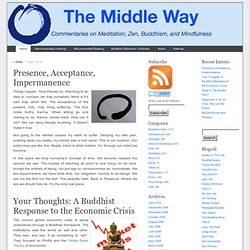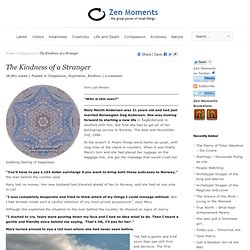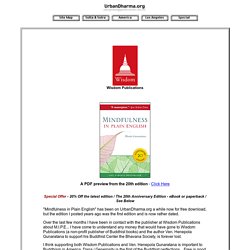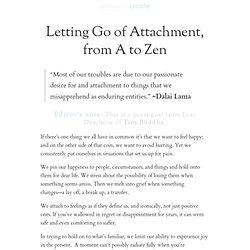

Kalama Sutta. Kundalini Spiral(Hatha Talk #7) Venkatesa Daily Readings - Readings From The works of Swami Venkatesananda. Kalama Sutta. Snow Lion Publications. 11 Easy Ways to Meditate (Or, There’s No Such Thing As Being Bad At Meditation) Tibetan Buddhism Archives. Meditation Quotes Meditation Sayings, Quotes on Meditation, Spiritual Quotes on Meditation.
Om Mani Padme Hum: The Meaning of the Mantra in Tibetan Buddhism. Buddhism and the Brain. Credit: Flickr user eschipul Over the last few decades many Buddhists and quite a few neuroscientists have examined Buddhism and neuroscience, with both groups reporting overlap.

I’m sorry to say I have been privately dismissive. One hears this sort of thing all the time, from any religion, and I was sure in this case it would break down upon closer scrutiny. When a scientific discovery seems to support any religious teaching, you can expect members of that religion to become strict empiricists, telling themselves and the world that their belief is grounded in reality. They are always less happy to accept scientific data they feel contradicts their preconceived beliefs. But science isn’t supposed to care about preconceived notions. Despite my doubts, neurology and neuroscience do not appear to profoundly contradict Buddhist thought. Buddhists say pretty much the same thing. Mr. Although I despaired, I comforted myself by looking at the overlying cortex.
Winnie the Pooh. Winnie the Pooh has a certain way about him, a way of doing things which has made him the world's most beloved bear.

And Pooh's Way, as Benjamin Hoff brilliantly demonstrates, seems strangely close to the ancient Chinese principles of Taoism. The 'Tao of Pooh' explains Taoism by Winnie the Pooh and explains Winnie the Pooh by Taoism. It makes you understand what A.A. Milne probably meant when he said he didn't write the Pooh-books for children in the first place. 9 Mindfulness Rituals to Make Your Day Better.
The Middle Way. An Enso is the Zen symbol that represents enlightenment.

It’s generally considered an output of enlightened activity. It’s both the symbol and reality of enlightenment. It’s a brush stroke from a master, that in a single thought-less breath captures the moment of non-thought. The brush stroke is a record of reality, the whole world is contained within the stroke. Kensho. The Kindness of a Stranger. Snow Light Mandala “Who is this man?”

Snow Lion Publications Dharma Quote. Metta Sutta. Daily-readings.swf (application/x-shockwave-flash Object) Mindfulness In Plain English. A PDF preview from the 20th edition - Click Here Special Offer - 20% Off the latest edition / The 20th Anniversary Edition - eBook or paperback / See Below "Mindfulness in Plain English" has been on UrbanDharma.org a while now for free download, but the edition I posted years ago was the first edition and is now rather dated.

Over the last few months I have been in contact with the publisher at Wisdom Publications about M.I.P.E... I have come to understand any money that would have gone to Wisdom Publications (a non-profit publisher of Buddhist books) and the author Ven. Henepola Gunaratana to support his Buddhist Center the Bhavana Society, is forever lost. 20 Ways to Give Without Expectations. “The true measure of a man is how he treats someone who can do him absolutely no good.”

~Samuel Johnson Some people say there’s no such thing as a selfless act—that any time we do something to help another person, we get something in return, even if it’s just a warm fuzzy feeling. I’ve spent a lot of time playing with this idea in my head. It doesn’t really bother me to know it feels good to help someone else. That, to me, is a completely acceptable type of selfishness. Letting Go of Attachment, from A to Zen. “Most of our troubles are due to our passionate desire for and attachment to things that we misapprehend as enduring entities.”

~Dalai Lama Editor’s note: This is a guest post from Lori Deschene of Tiny Buddha. If there’s one thing we all have in common it’s that we want to feel happy; and on the other side of that coin, we want to avoid hurting. Yet we consistently put ourselves in situations that set us up for pain. DalaiLama 18 Rules for Living. Lojong. Lojong (Tib.

བློ་སྦྱོང་,Wylie: blo sbyong) is a mind training practice in the Tibetan Buddhist tradition based on a set of aphorisms formulated in Tibet in the 12th century by Geshe Chekhawa. The practice involves refining and purifying one's motivations and attitudes. The fifty-nine or so slogans that form the root text of the mind training practice are designed as a set of antidotes to undesired mental habits that cause suffering.